When winter comes, garden birds struggle to find food. Indeed, in this cold season insects are scarce, as are fruits. In addition, frost and snow in some regions do not help. To help our feathered friends through winter, it is strongly recommended to feed them by putting up feeders. It is even possible to make zero-waste feeders using leftover orange peels. Easy to make alone, with family or with children, discover our tutorial to make a bird feeder from oranges.
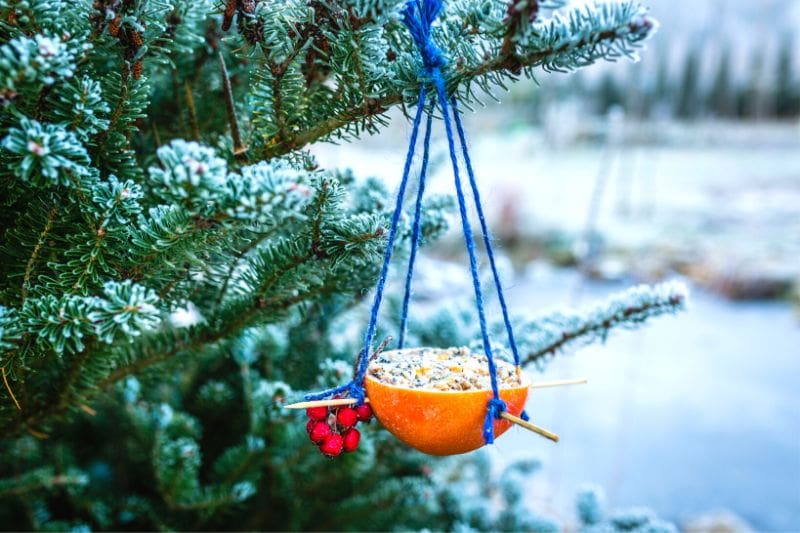
Why oranges?
- When preparing fresh-squeezed orange juice or enjoying the flesh of a citrus fruit, you end up with peel leftovers as waste. These can be reused (instead of thrown away) as containers to hold bird seeds.
- These orange-peel feeders can be hung from tree branches to feed species that like to perch while pecking, such as great tit, robin, house sparrow or chaffinch.
- Making this feeder can also be a fun activity to do with children from about 4 years old. They will learn about bird food, why it is difficult for birds to find food in winter and can even play observer from the window.
What do I need?
- One or more oranges. Grapefruits or other citrus fruits can also be used.
- A seed mix for garden birds. Choose a varied mix to satisfy tastes of different bird species.
- Margarine or unsalted vegetable fat. Do not use butter, animal fat or lard, which are harmful to birds' digestive systems.
- String, cord or ribbon.
- Wooden sticks or thin twigs (keeping with zero-waste idea).
- Optional:
How to make a bird feeder from an orange?
Tip before starting:
Take margarine out of fridge one to two hours before activity so it reaches room temperature. This gives a soft, easy-to-work fat.
Steps to make your orange-peel feeder:
1- Cut citrus fruit in half and hollow it out (with knife, spoon or by juicing) leaving only the peel.
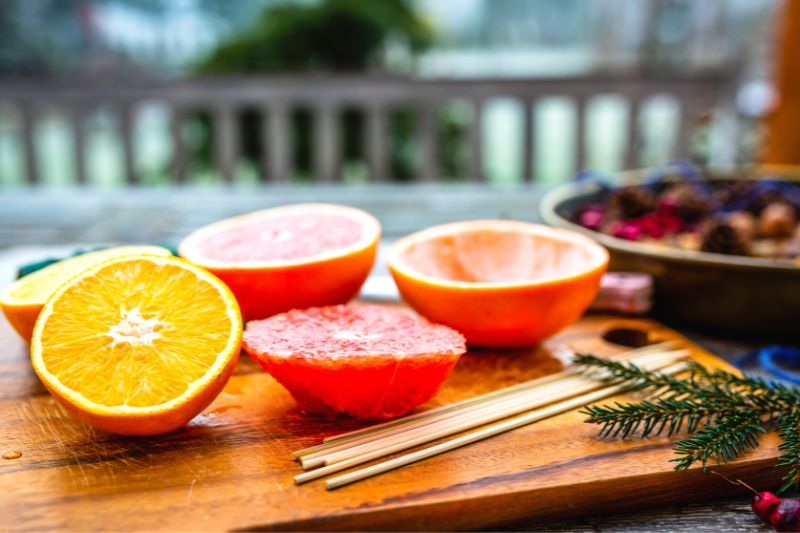
2- Push sticks through orange from one side to the other to form a cross. These wooden ends will serve as perches for birds.
3- Attach string, twine or ribbon to the sticks so feeder can be suspended.
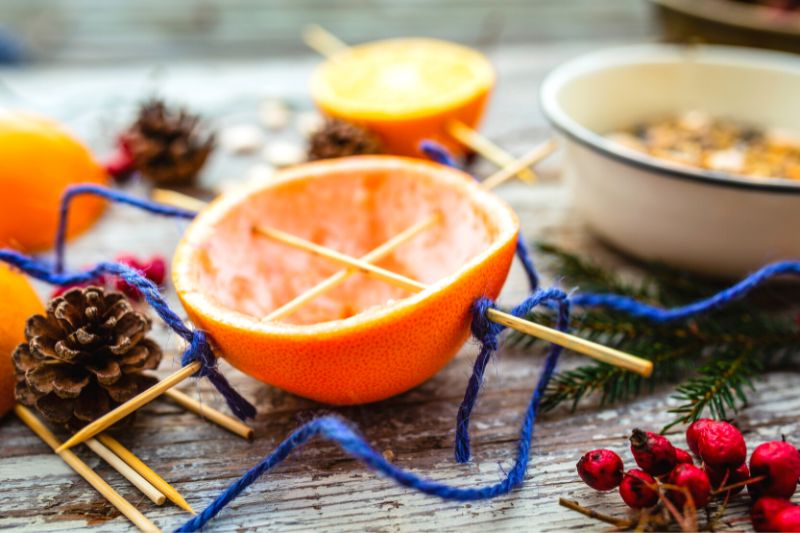
4- In a shallow plate or bowl, mix seeds with a little margarine. You should get a sticky mixture. This texture prevents seeds from blowing away in the slightest breeze.
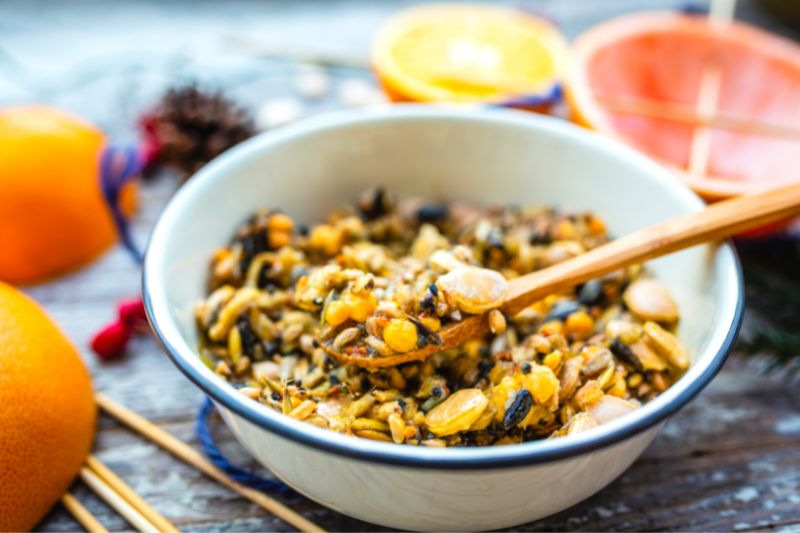
5- Fill each half-orange with this mixture.
6- You can also add a few berries on top.

7- Hang feeder from branches of trees and bushes in garden.
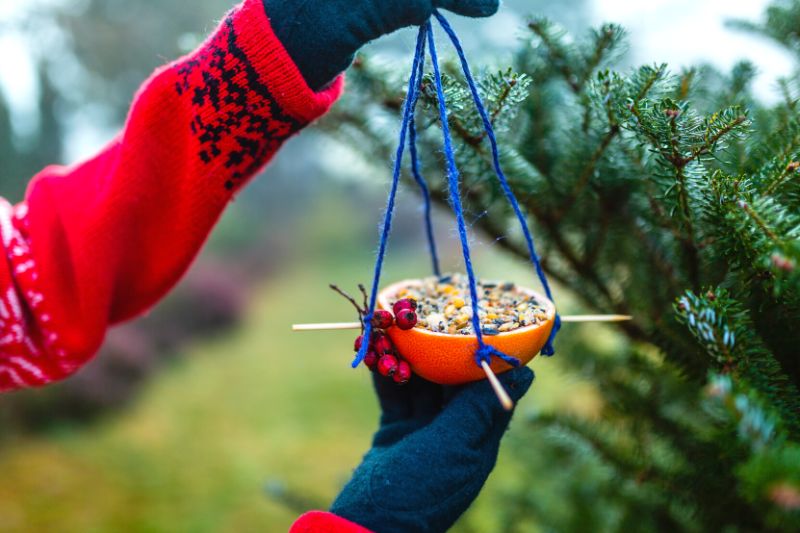
Tips and advice
- It is advisable to feed garden birds when it becomes difficult for them to find food, generally between October and April, when insects are less abundant. However, this can vary depending on region.
- Remember birds also need water in winter. Consider placing a bird bath in garden. Tip: to stop water freezing, place a floating ball in the dish. This limits ice formation.
- Check seed condition regularly to avoid any risk of mould.
- Avoid using dry bread or rusks to feed birds. These dry foods can swell in birds' stomachs and cause serious health problems.
- Do not add salted seeds, such as salted snack peanuts. Salt is highly inadvisable for our feathered friends.
- In spring, when orange feeders are no longer used by birds, you can then compost them. However, mix orange peels with other organic materials to obtain a balanced compost. Be careful: orange peels should not be placed in a vermicompost for wellbeing of earthworms.































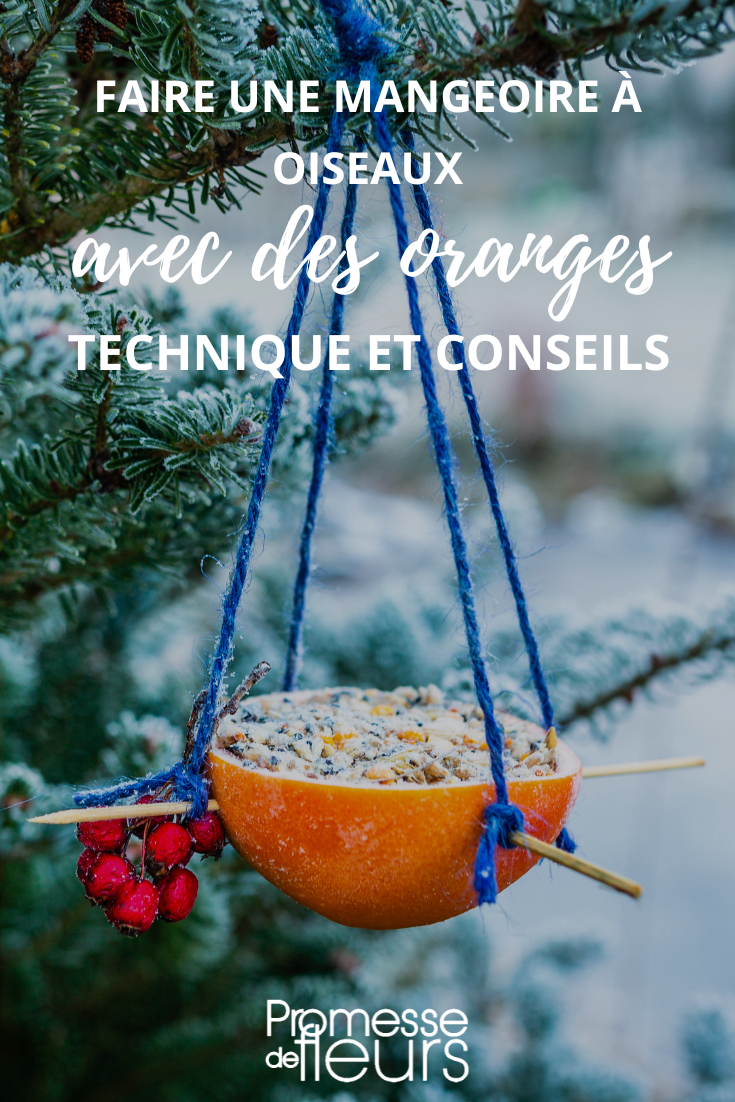
Comments